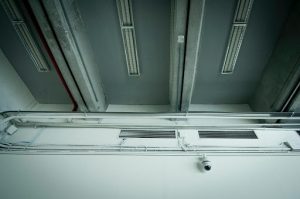How to Spot HVAC Mold and Remove Them?
Mold is a naturally occurring organism that you can find both outside and indoor air of your house or workplace. However, experiencing mold growth in your facility is never a good feeling; neither is it healthy. Even if you think you are taking good care of your HVAC system and running efficiently, it can have hidden mold colonies growing in your air vents.
If you cannot see it, it does not mean it’s not there. Detecting mold can be tricky since you cannot peak into the vents and look through the corners, so you need to notice the signs. In this article, we will help you understand the causes and signs of mold in HVAC systems as well as the process of cleaning air vents for mold:
Causes of Mold Growth in HVAC System
Extra Moisture
Instead of evaporating, humidity might gather up in the air ducts in the form of water drops. This provides the moisture that mold spores require to establish colonies. These spores will then feed on dirt, dead skin cells, and moisture as their food resource to grow faster in your vents.
Inefficient Ventilation
Even though you might believe that your air vents are ideal for air ventilation, this might not always be the situation. Your HVAC system might not be working as efficiently as it should due to dust accumulation, leaks, blockage, or insufficient exterior vents. This only allows rapid mold growth.
Larger HVAC Units
Larger air conditioners can chill smaller areas too rapidly; as a result, they switch off before the air can dehumidify and create extra moisture accumulation in your air vents. Eventually, your HVAC system’s efficiency keeps deteriorating until it completely stops working and the mold starts affecting your health severely.
Signs of Mold in HVAC System
Musty Odor
Mold has a distinct odor when it is present in high enough quantities. It has a rustic or musty odor, according to many individuals. Mold has an awful odor, but it makes bigger mold infestations easier to spot on the plus side.
When mold grows in your ducts, the smell is generally stronger when your HVAC system is turned on. The mold in the HVAC system spreads, the air that flows out spreads more mold spores. When the HVAC system isn’t working, mold particles settle within the ducts, making the odorless noticeable.
Mold on Air Vents
Because the air from your HVAC system initially comes into touch with your vents before reaching the rooms in your house, considerable mold growth on the vents is one of the very common signs of mold in the HVAC system. Tiny blotches of black, white, and green fungus will land on your vents, and you can easily detect them with the naked eye. Even though you would not notice mold on the exterior parts of the vents, it would be best to frequently check the duct-facing side for mold by removing the vents and examining them properly.
Allergies and Breathing Issues
One of the easiest detectable signs of mold in an HVAC system is allergies. Also, it presents breathing issues to whoever is present in the space. And you will notice have issues like itchy and watery eyes, irritated nasal passages, and frequent coughing only when you are indoors.
Mold inhalation can result in nausea, diarrhea, tiredness, and other symptoms in more serious cases. Mold exposure exacerbates the discomfort of those with pre-existing breathing problems. Individuals having mold allergies are more vulnerable to mold. The longer you will be exposed to mold, the greater the risk of catching these diseases.
How to Remove Mold From HVAC System?
If you detect any of the signs mentioned above, then you should start cleaning air vents for mold as soon as possible. The inability to act quickly allows mold to develop and spread, perhaps increasing the health problems it might bring. If you locate mold, make mold removal a top priority.
If you try any DIY options to remove mold yourself, you expose yourself to the dangerous consequences. Poor mold removal techniques can exacerbate the situation by dispersing the mold and creating more harm. Some mold infestations are too much for an untrained individual to handle. We suggest you hire an expert for cleaning air vents for mold so that you and your place stay safe.
Conclusion
Having mold in an HVAC system is extremely dangerous for you and your family or employees at work. It would be best if you did not have an out of sight out of mind mentality for mold in air vents. It can cause thousands of air vent cleaning costs.
Try your best not to wait for things to worsen and call for air vent cleaning services frequently. If you have poor and musty indoor air quality or any other signs as mentioned above of mold in HVAC, then you should contact 911 Restoration of Long Island as soon as possible to handle the task for you and provide you with a fully efficient and mold-free HVAC system.



